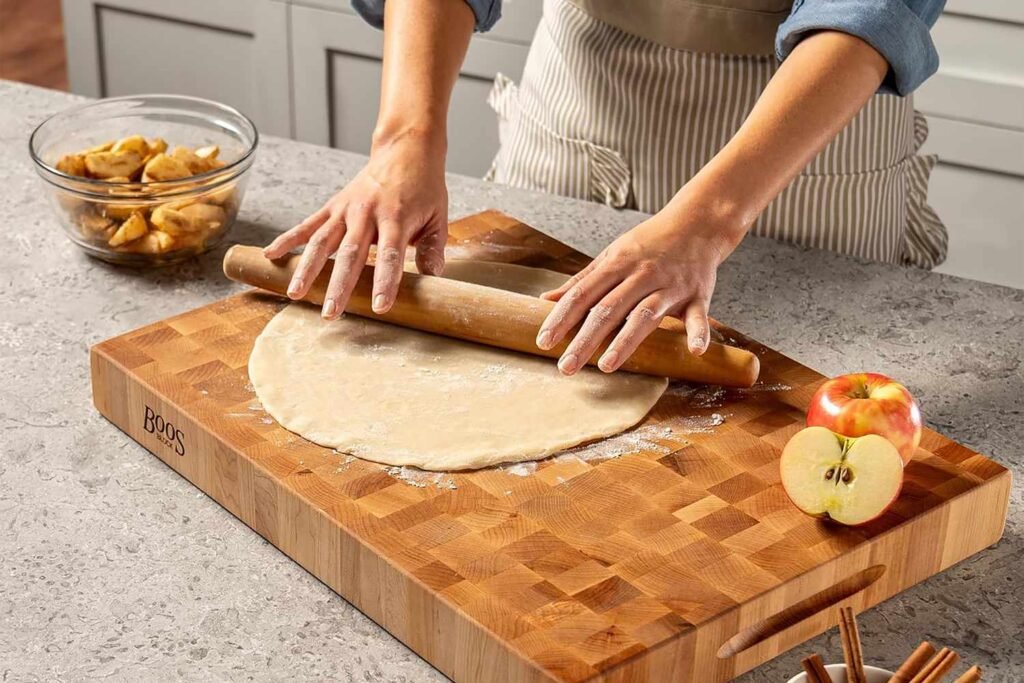John Boos wooden cutting boards have become a staple in the kitchens of well-known chefs and Food Network personalities such as Ina Garten, Bobby Flay, Rachael Ray, and Giada De Laurentiis. These culinary experts have praised the John Boos cutting boards for their durability, solid construction, and essential role in their cooking routines. In fact, Garten even mentioned in a YouTube video that these boards will last forever, showcasing their longevity and quality.
While wooden cutting boards do require a bit more maintenance compared to plastic ones, the upkeep is relatively simple. To keep a John Boos cutting board in top condition, all you need to do is wash it by hand, dry it promptly, and oil it approximately once a month to prevent warping or cracking. John Boos even offers a convenient maintenance set for sale, making it easy to care for your cutting board properly.
The appeal of wooden cutting boards lies in their durability, beauty, and eco-friendliness. Unlike plastic boards that can shed microplastics into your food, wooden boards are more sustainable and aesthetically pleasing. Moreover, wooden cutting boards are known for being more resistant to knife marks and scratches, making them a popular choice among home cooks and professional chefs alike.
For those looking to invest in a John Boos cutting board, there are several bestselling options to choose from. The Chop-N-Slice Series Maple Cutting Board, B Series Maple Cutting Board, R-Board Series Maple Cutting Board, R-Board Series Walnut Cutting Board, CB Series Maple Cutting Board, RA Series Maple Cutting Board, and CCB Series Maple Cutting Board are all highly rated and recommended by users.
Each cutting board offers unique features such as reversible designs, finger notches for easy lifting, juice grooves for clean meal prep, and end-grain construction for gentler knife use. Whether you prefer maple or walnut wood, there is a John Boos cutting board to suit your needs and style preferences.
By investing in a John Boos cutting board, you are not only acquiring a high-quality kitchen tool but also a timeless piece that will enhance your culinary experience for years to come. With proper care and maintenance, a John Boos cutting board can become a beloved kitchen essential that adds both functionality and beauty to your cooking space. Introduction: In recent years, there has been a growing interest in sustainable living and reducing our impact on the environment. One way that individuals can make a positive change is by adopting a zero waste lifestyle. This approach aims to minimize the amount of waste we produce by reusing, recycling, and composting as much as possible. In this article, we will explore what it means to live a zero waste lifestyle and provide tips on how to make the transition.
What is Zero Waste Living?
Zero waste living is a philosophy and lifestyle that seeks to eliminate waste production as much as possible. The goal is to reduce the amount of trash that ends up in landfills and incinerators by reusing and recycling materials, and composting organic waste. Zero waste living also emphasizes the importance of choosing products that are durable, reusable, and made from sustainable materials.
Tips for Adopting a Zero Waste Lifestyle:
1. Reduce single-use plastics: One of the biggest sources of waste in our society is single-use plastics. To reduce your plastic consumption, opt for reusable alternatives such as stainless steel water bottles, glass containers, and cloth shopping bags. Avoid products with excessive packaging and choose items with minimal or compostable packaging instead.
2. Compost organic waste: Food scraps and yard waste make up a significant portion of household waste. By composting these materials, you can reduce the amount of trash you send to the landfill and create nutrient-rich soil for your garden. Composting can be done in a backyard compost bin or through a municipal composting program.
3. Shop in bulk: Buying in bulk is a great way to reduce packaging waste. Bring your own containers to refill with items like grains, nuts, and spices at a bulk store or farmers market. By buying only what you need, you can also minimize food waste.
4. Embrace second-hand shopping: Instead of buying new items, consider shopping at thrift stores, consignment shops, or online marketplaces for used goods. Not only does this reduce the demand for new products, but it also gives items a second life and prevents them from ending up in the landfill.
5. Make your own products: Many household items can be made at home using simple ingredients. DIY products like cleaning supplies, personal care products, and cosmetics are often more eco-friendly and cost-effective than store-bought alternatives. By making your own products, you can also avoid unnecessary packaging.
Conclusion: Transitioning to a zero waste lifestyle may seem daunting at first, but by taking small steps and making conscious choices, you can significantly reduce your environmental footprint. By embracing the principles of zero waste living, you can not only help protect the planet but also save money and live a more sustainable and fulfilling life. Start making changes today and be a part of the solution to our waste crisis.


